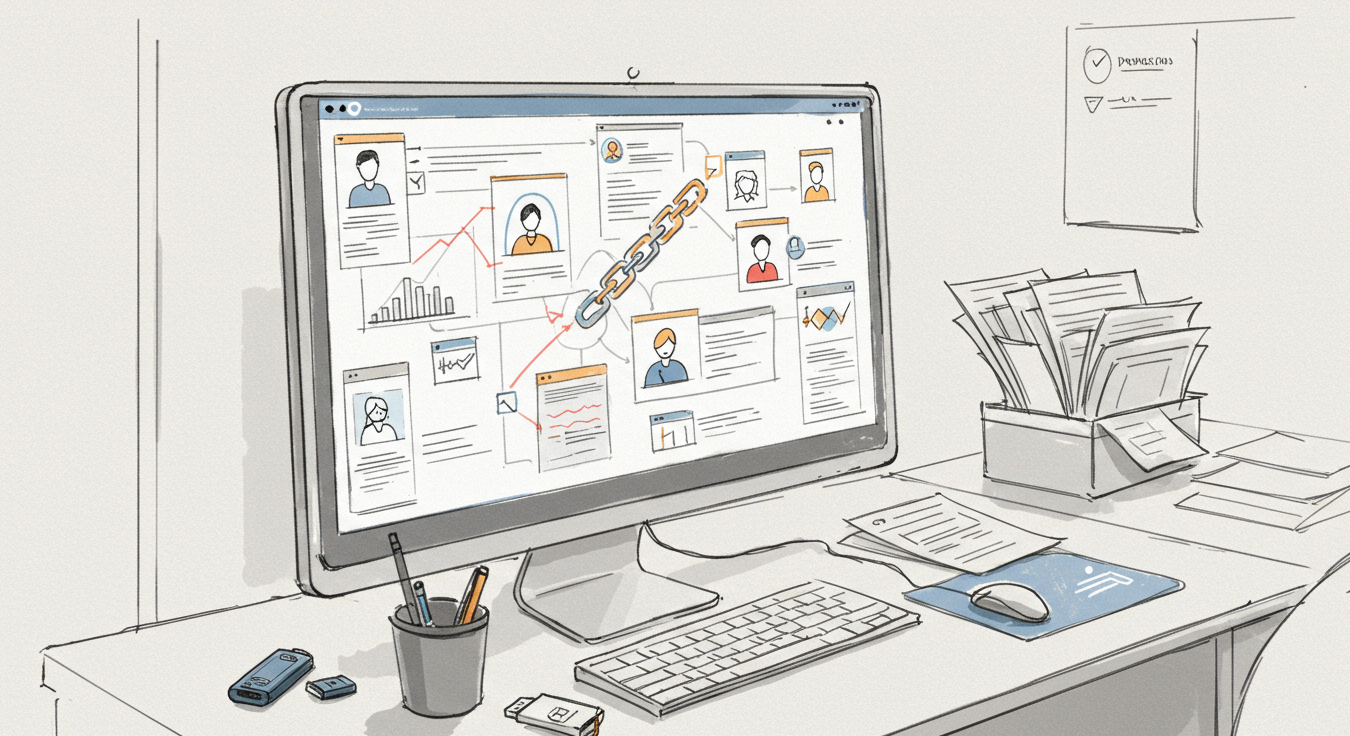In today’s digital world, data security and privacy are more critical than ever. With cyber threats, phishing attacks, and data breaches on the rise, organizations and individuals must be vigilant about how they share sensitive information. Traditionally, email attachments have been the standard for file sharing, but they come with significant security risks, such as unauthorized access, malware distribution, and difficulty in controlling who can view or edit a file once it’s sent.
Strengthening Data Security: How Link Sharing Protects Sensitive Information
Cloud-based file sharing via secure links offers a safer, more controlled alternative. By replacing attachments with links, users gain access to advanced security features like access controls, password protection, expiration dates, and activity tracking, ensuring that sensitive data remains protected. This article explores how link sharing enhances security and mitigates the risks associated with traditional file attachments.
The Security Risks of Traditional Email Attachments
Email attachments have long been a convenient way to share documents, but they come with several security vulnerabilities that can put sensitive data at risk.
1. Risk of Unauthorized Access
Once an email with an attachment is sent, the sender loses control over the file. The recipient can forward it to others without restriction, leading to unauthorized access. If the email is mistakenly sent to the wrong person, there’s no way to revoke access, increasing the risk of data leaks.
2. Susceptibility to Phishing and Malware Attacks
Cybercriminals often use email attachments to distribute malware, ransomware, and phishing scams. A single malicious attachment can compromise an entire system, putting confidential information at risk. Since employees and individuals frequently receive attachments from various sources, distinguishing safe files from malicious ones can be challenging.
3. Compliance and Regulatory Risks
Many industries, such as finance, healthcare, and legal services, have strict data protection regulations (e.g., GDPR, HIPAA, and CCPA). Email attachments often fail to meet these security standards, leading to compliance risks. Unauthorized sharing of personal or confidential data via attachments can result in legal penalties and financial losses.
4. No Control Over Updates and Version Management
Once an attachment is sent, any edits made to the file are disconnected from the original. This can lead to confusion, multiple outdated versions floating around, and errors in data accuracy—posing risks for businesses relying on up-to-date information.
How Cloud-Based Link Sharing Enhances Security
Cloud-based file sharing provides a more secure, efficient, and flexible way to share files. By sending links instead of attachments, users can maintain control over their files and apply advanced security measures.
1.Access Controls: Restrict Who Can View or Edit the File
One of the biggest security advantages of link sharing is access control. Unlike email attachments, which can be forwarded freely, cloud-based links allow users to:
- Restrict access to specific individuals (e.g., only internal employees or designated clients).
- Set different permission levels (e.g., view-only, edit, or comment access).
- Revoke access at any time, preventing unauthorized distribution.
Example:
A finance manager sharing a quarterly report via a Google Drive link can ensure that only authorized executives can view the document, while team members can only comment, preventing accidental edits.
2. Password Protection: Add an Extra Layer of Security
With attachments, anyone who gets hold of the email can open the file. Cloud-based links offer password protection, ensuring that only users with the correct password can access the document.
Benefits:
- Prevents unauthorized access if an email is intercepted or forwarded.
- Ideal for sharing confidential financial, legal, or business documents.
Example:
A law firm sending confidential contracts can use Dropbox or OneDrive to share password-protected links, ensuring only intended recipients can access sensitive documents.
3. Expiration Dates: Limit Access Over Time
Attachments remain accessible indefinitely unless manually deleted by the recipient. However, cloud-based link sharing allows users to set expiration dates, automatically revoking access after a set period.
Advantages:
- Prevents prolonged access to sensitive documents.
- Ideal for temporary collaborations or time-sensitive projects.
- Ensures outdated files are not referenced or used mistakenly.
Example:
A marketing agency sharing a campaign proposal with a client can set the link to expire after seven days, preventing unauthorized access after the project concludes.
4. Activity Tracking: Monitor File Access and Usage
Another major benefit of cloud-based links is activity tracking. Unlike attachments, where you have no visibility once the file is sent, cloud sharing services allow you to monitor:
- Who accessed the file and when.
- What actions were taken (e.g., edits, comments, downloads).
- If unauthorized attempts were made to access the file.
Example:
A company sending an investor report via Box or Microsoft OneDrive can track who viewed the document and ensure confidential information isn’t being misused.
5. Reduced Risk of Data Breaches and Compliance Violations
By using cloud-based sharing with enterprise-grade encryption, businesses ensure compliance with global data protection regulations. Leading cloud platforms like Google Drive, Dropbox, and OneDrive use end-to-end encryption to safeguard files, preventing unauthorized interception or hacking.
- End-to-End Encryption: Ensures data remains secure during transmission and storage.
- Data Loss Prevention (DLP): Prevents unauthorized downloads or leaks of sensitive files.
- Compliance Standards: Many cloud providers comply with GDPR, HIPAA, and SOC 2 security frameworks, ensuring higher data protection than traditional email.
Example:
A healthcare provider sharing patient records can use HIPAA-compliant cloud storage, ensuring strict access controls and encryption, reducing legal risks.
The Future of Secure File Sharing
With cybersecurity threats evolving, organizations are moving towards more intelligent and automated security solutions for file sharing.
Key Trends to Watch:
- AI-Driven Threat Detection: Cloud storage providers will use AI to detect suspicious file access patterns, preventing breaches.
- Zero-Trust Security Models: Businesses will adopt zero-trust principles, ensuring that even internal users require strict authentication for sensitive data.
- Decentralized Cloud Storage: Emerging blockchain-based storage solutions will offer even greater security and transparency.
Conclusion
In an era where data breaches, phishing attacks, and cyber threats are on the rise, traditional file-sharing methods like email attachments pose significant risks. Cloud-based link sharing offers a secure, efficient, and flexible alternative, giving users full control over file access while integrating advanced security features like password protection, expiration dates, and access tracking.
By making the simple switch from attachments to secure links, businesses and individuals can protect sensitive information, enhance compliance, and strengthen data privacy in an increasingly digital world. The future of secure collaboration lies in intelligent, cloud-powered solutions that ensure safety without sacrificing convenience.




